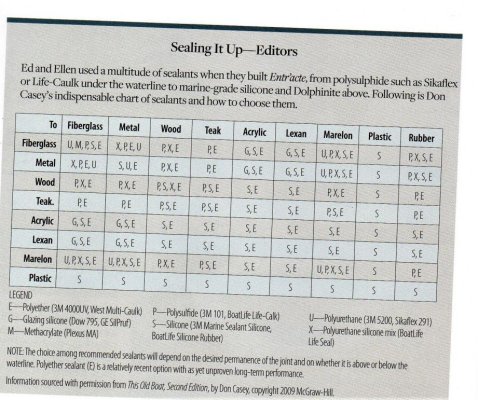CapeWhaler
Veteran Member
Before launch this spring I want to lay a bead of fresh caulk around a couple of Marelon thru-hulls that will be under water. I have some Boat Life caulk I was going to use but then noticed on the label that it's "not for use on plastic." Any views on whether this caveat applies to Marelon?
Joe
Joe

